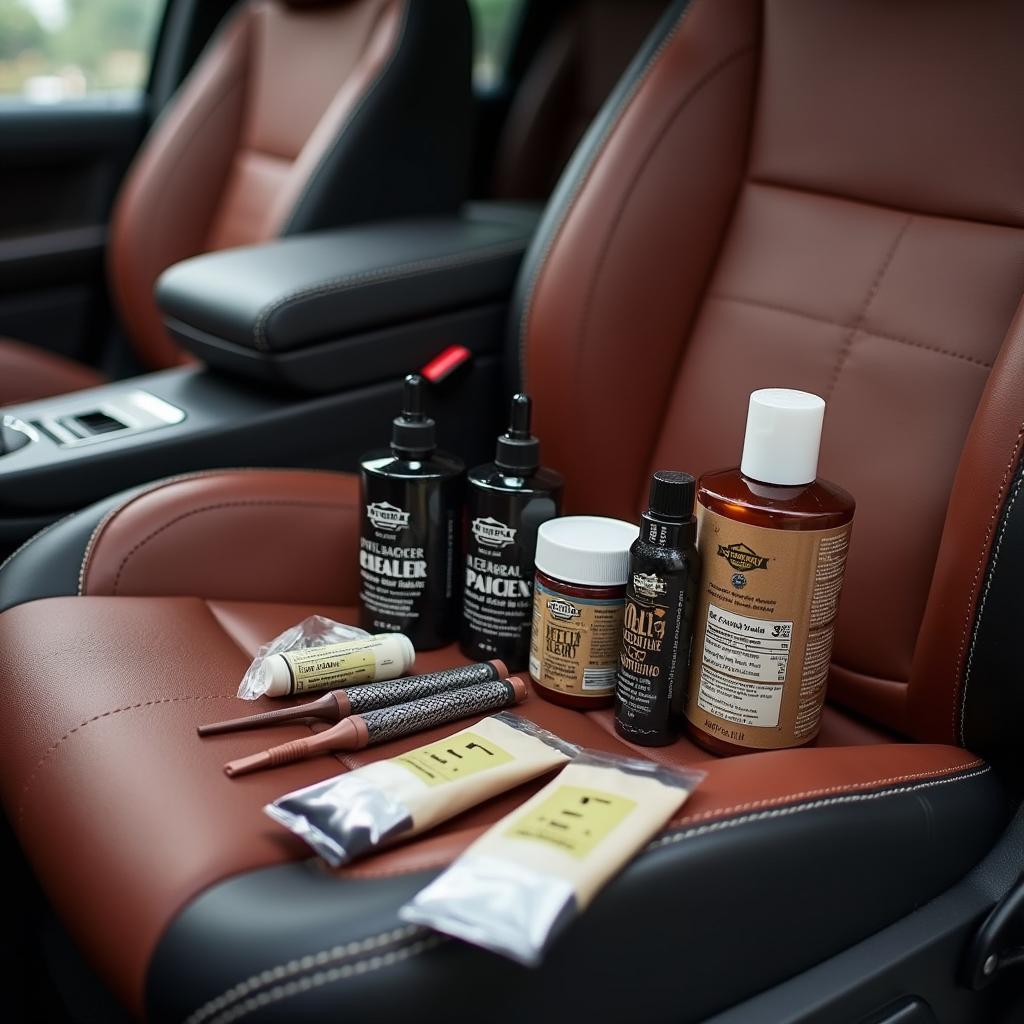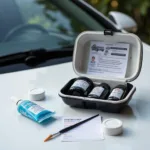Leather car seats add a touch of luxury and sophistication to any vehicle. However, over time, they can suffer from wear and tear, such as cracks, fading, and stains. This is where car leather seat repair comes in. Whether you’re dealing with minor scratches or significant damage, this guide will provide you with all the information you need to know about restoring your leather car seats to their former glory.
Understanding the Importance of Car Leather Seat Repair
Leather car seats are an investment, and like any investment, they require proper care and maintenance to ensure their longevity. Neglecting to repair damaged leather seats can lead to further deterioration, potentially requiring costly replacements down the line. Timely repair not only enhances the aesthetic appeal of your car’s interior but also helps to preserve its resale value.
Common Causes of Car Leather Seat Damage
Several factors can contribute to the wear and tear of leather car seats, including:
- Sunlight Exposure: Prolonged exposure to UV rays can cause leather to fade, crack, and dry out.
- Heat and Humidity: Extreme temperatures and high humidity levels can accelerate the deterioration of leather.
- Sharp Objects: Keys, pens, and even pet claws can easily scratch and puncture leather surfaces.
- Spills and Stains: Liquids like coffee, soda, and ink can penetrate the leather’s pores, leaving unsightly stains.
- Friction and Abrasion: Constant rubbing against clothing and accessories can cause leather to wear down and lose its color.
DIY vs. Professional Car Leather Seat Repair
When it comes to car leather seat repair, you have two primary options: do-it-yourself (DIY) or seek professional assistance.
DIY Car Leather Seat Repair
DIY repair kits are readily available online and at auto parts stores. These kits typically include leather cleaners, conditioners, fillers, and colorants. While DIY repair can be a cost-effective solution for minor damage, it requires patience, attention to detail, and a willingness to learn.
Professional Car Leather Seat Repair
For significant damage or if you lack the time or confidence to tackle the repair yourself, seeking professional help is recommended. Experienced technicians have the expertise, tools, and high-quality products to restore even the most severely damaged leather seats.
 Professional Car Leather Seat Repair Tools
Professional Car Leather Seat Repair Tools
Choosing the Right Car Leather Seat Repair Products
The success of your car leather seat repair project largely depends on the quality of products you use. When selecting repair products, consider the following factors:
- Type of Leather: Different types of leather require specific cleaning and conditioning products.
- Severity of Damage: Minor scratches and scuffs may only need a leather conditioner, while deep cracks and tears require fillers and colorants.
- Color Matching: If you’re using colorants, ensure they closely match the original color of your leather seats.
Tips for Maintaining Repaired Car Leather Seats
Once you’ve repaired your leather car seats, proper maintenance is crucial to prevent future damage and keep them looking their best:
- Regular Cleaning: Use a pH-neutral leather cleaner and a microfiber cloth to gently wipe down your seats weekly.
- Conditioning: Apply a leather conditioner every few months to keep the leather hydrated and supple.
- UV Protection: Park your car in the shade or use a sunshade to minimize UV exposure.
- Prompt Spill Cleanup: Blot spills immediately with a clean cloth to prevent them from setting into the leather.
Conclusion
Car leather seat repair is essential for preserving the beauty, comfort, and value of your vehicle. By understanding the causes of damage, exploring repair options, and following proper maintenance practices, you can keep your leather car seats looking their best for years to come. Remember, timely attention and care can prevent minor issues from escalating into costly repairs or replacements.


